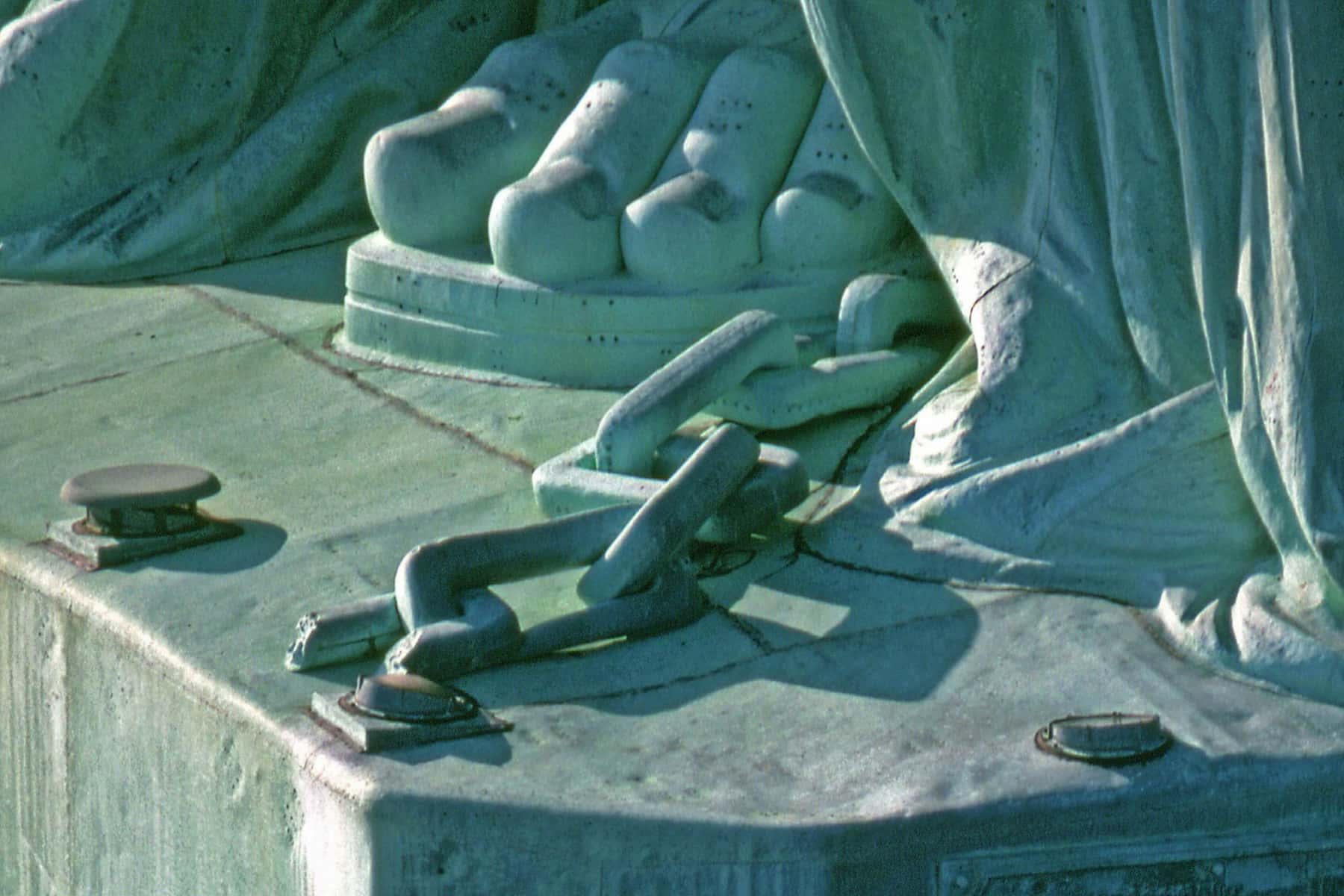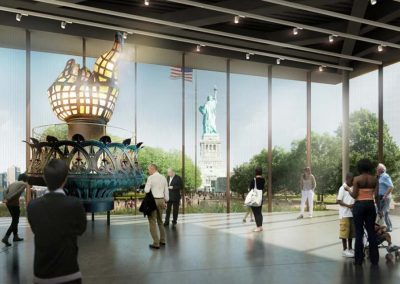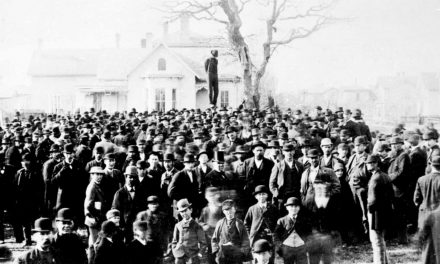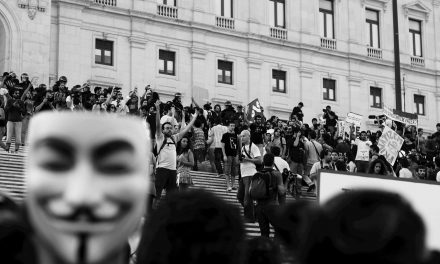
In 1886, The Statue of Liberty was a symbol of democratic government and Enlightenment ideals, as well as a celebration of the Union’s victory in the American Civil War and the abolition of slavery.
The 26,000-square-foot museum on Liberty Island opened to the public on May 16. It is the new home for the statue’s original torch that was replaced in the 1980s restoration, an unoxidized copper replica of Lady Liberty’s face, and other artifacts that previously were in a smaller museum space inside the statue’s pedestal.
It also revived an aspect of the statue’s long-forgotten history, that Lady Liberty was not originally designed to commemorate the arrival of immigrants. Ellis Island, the inspection station through which million of immigrants passed, did not open until six years after the statue was unveiled in 1886. The plaque with the famous Emma Lazarus poem was not added until 1903.
Edouard de Laboulaye, the French political thinker, U.S. Constitution expert, and abolitionist, who first proposed the idea of a great monument as a gift from France to the United States was a firm supporter of President Abraham Lincoln and his fight for abolition. Laboulaye saw abolition not only as a way to eliminate immorality, but also as a way to protest repressive tendencies in France.
As an abolitionist, Laboulaye was an honorary member of the Philadelphia branch of the Union League Club, founded in 1862. The Union league Club was a group of people who were dedicated to the new Republican Party, the Union’s cause in the Civil War, and the abolition of slavery. Additionally, Laboulaye was a cofounder and president of the French Anti-Slavery Society. This society was founded in 1865. In essence, it called upon all nations to abolish slavery. Additionally, the members also raised money that was then given to newly freed slaves in the United States.
With the abolition of slavery and the Union’s victory in the Civil War in 1865, Laboulaye’s wishes of freedom and democracy were turning into a reality in the United States. In order to honor these achievements, Laboulaye proposed that a gift be built for the United States on behalf of France. Laboulaye hoped that by calling attention to the recent achievements of the United States, the French people would be inspired to call for their own democracy in the face of a repressive monarchy.
When Laboulaye’s Statue of “Liberty Enlightening the World” was completed, it not only represented democracy but also symbolized American independence and the end of all types of servitude and oppression.
A broken shackle and chain rest at the Statue’s right foot. The chain disappears beneath the draperies, only to reappear in front of her left foot, its end link broken.
Although the broken shackle is a powerful image, the meaning behind it was not yet a reality for African Americans in 1886.
After the Statue’s dedication in 1886, the Black Press began to debunk romantic notions of the Statue of Liberty and American History. Racism and discrimination towards African Americans did not end after the Civil War or with the dedication of the Statue. It continued on for more than a century. As a result, the Statue was not a symbol of democratic government or Enlightenment ideals for African Americans but rather a source of pain.
Instead of representing freedom and justice for all, the Statue emphasized the bitter ironies of America’s professed identity as a just and free society for all people regardless of race. From the time of the Statue’s dedication, attitudes towards the Statue in the African American community were ambivalent and uncertain.
As W.E.B. Du Bois wrote in his book, the Autobiography of W.E.B. Du Bois: A Soliloquy on Viewing My Life From the Last Decade of Its First Century, he was unable to imagine the same sense of hope he assumed some immigrant arrivals had felt when he sailed past the Statue on a return trip from Europe. This hope did not pertain to his race.
The fight for equality, liberty, and justice for all at this point in time had not been achieved, but rather disregarded after the Statue’s completion and dedication. Therefore, African Americans rarely used the Statue of Liberty as a relevant symbol for their struggle.
They were reluctant to embrace the symbol of a nation which would not fully include them as citizens.
National Park Service
Originally published by the National Park Service as Statue Of Liberty: Abolition



















